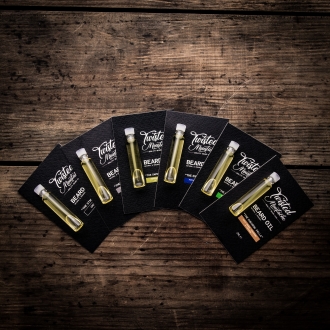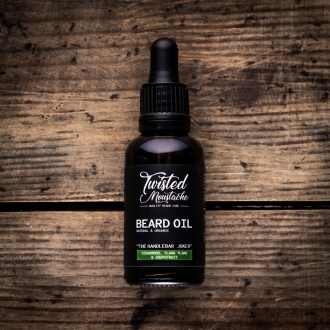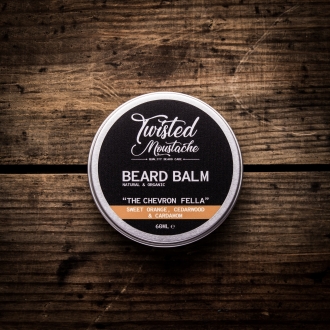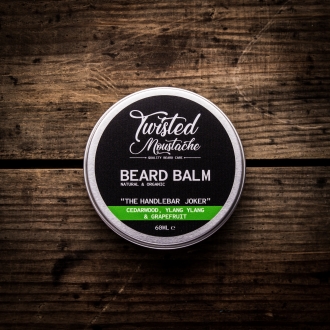Do Beards Really Keep You Warm? The Surprising Science Behind Facial Hair
By Jack Shaw (Guest Post) | Last updated 20th January 2025
Psychologically, facial hair indicates masculinity, maturity and virility and creates a strong-looking jawline — handy qualities to attract a mate. A beard also communicates dominance, intimidating potential aggressors to win battles without fighting them.
But how about weather protection? Can a beard help your lower face and neck feel toasty in winter? Or is it merely an illusion? It turns out that the answer isn’t straightforward.
The Mysterious Evolutionary Purpose of the Beard
Scientists have studied the functional purpose of human hair. They discovered that body hair contributes to thermoregulation — the process that allows your body to maintain its internal temperature. Researchers found scalp hair protects our heads from the sun’s harmful ultraviolet rays. A full head of hair also helps keep you cool in hot environments and warm in the cold.
Eyebrows and eyelashes prevent vision impairment by keeping dirt, debris and sweat from entering your eyes. Aside from reducing friction, armpit hair spreads pheromones, while pubic hair shields your most sensitive region from pathogens.
However, the jury is still out on whether facial hair serves a nonornamental purpose. Some researchers speculate that prehistoric men might have grown beards for impact protection, keeping facial skin and bones intact when fighting.
Researchers at the University of Utah wanted to test the pugilism hypothesis. This proposition states that the human beard works similarly to a lion’s mane, which protects against lethal blows to vital regions — like the jugular.
Members of the college’s biology and engineering departments joined forces to perform a drop weight test on dummies made of fibre epoxy composite. Some dummies had hair, while others didn’t. The test aimed to replicate a blunt strike to the face.
In the study, the dummies with hair experienced lower peak impact forces than those without. The researchers attributed the decreased failure rate of these so-called “furred” dummies to the presence of hair and its potential to absorb energy. Based on these findings, the scientists speculated that beards could also minimise contusions, reduce lacerations and deflect oblique blows.
The study drew criticism. Some naysayers said the experiment made intuitive sense, but might not be rational from an evolutionary standpoint.
Beards as Natural Scarves

It’s unclear what selective pressure nature imposed on men to grow beards in prehistoric times. However, modern dermatologists confirm that facial hair — like fur, wool, scales and plumage on animals — provides warmth during frigid days.
In a 2018 interview with the Wall Street Journal, Dr. Anthony Rossi, now-assistant professor of dermatology at Weill Cornell Medical College, finally settled the debate on whether beards provide thermal insulation.
Rossi explained that human bodies instinctively respond to cold by contracting the tiny muscles in the skin, causing hair strands to stand up and trap air and heat. Thus, a beard protects facial skin from the elements.
American football players can attest to this. In chillier regions like New York, some games have recorded gusts of up to 55 mph — or 88.5 kph — which can cause windburn to clean-shaven athletes.
Besides providing insulation, facial hair also reduces sun exposure and filters out bacteria.
How to Grow a Winter Beard for Warmth

A beard isn’t a substitute for a thick, cozy scarf. However, growing a bushy one may keep you warm enough inside your house to cut your heating costs — especially between 3 a.m. and 6 a.m., when it’s usually the coldest. Having a beard can also make your face feel as snug as a bug in a rug when outdoor temperatures are above freezing and the wind isn’t blowing hard. Here’s how to grow a proper beard this winter.
Aim for Something Fuller
A full beard naturally provides maximum warmth. It should cover your chin, cheeks and parts of your neck. Include a moustache, too.
Avoid shaving too high up your neck. A high neckline will lessen your beard’s insulating effects and make you look silly when your facial hair grows longer. This mistake can also draw attention to excess fat and loose skin on your neck.
Leaving hair above your Adam’s apple is a good rule of thumb. While a light stubble on the neck might not flatter your face, your beard will look fuller when it grows longer.
Start Early
A full beard takes months to grow, so you should work on it as early as autumn. If winter has already rolled around, don’t give up — you may still get scant facial hair in time.
Facial hair has a shorter growth phase than scalp hair, so you may achieve more coverage in less time than you expected. However, this period may end before you grow a long, flowing beard. Plus, hair growth among men in the United Kingdom tends to slow in January and February due to seasonal changes.
Genetics are also crucial in beard growth. Some men grow thicker manes as they age — partly due to having higher androgen hormone levels — while others experience the opposite.
Avoid Shaving
Shaving your face clean to stimulate beard growth is a myth. It won’t thicken your facial hair, either. For the most part, patience is the secret. Nevertheless, observe proper grooming so your beard grows uniformly. Otherwise, you may end up with heavy, untidy stubble.
Wet-shave to remove stray hairs and define your neckline. Trim around your beard to remove split ends and maintain a neat, well-groomed appearance.
Boost Your Testosterone
High testosterone promotes beard growth fullness. Many factors determine your testosterone level. Unfortunately, some are beyond your control, so maximise what you can by making positive lifestyle changes.
First, eat a balanced diet to nourish your body. Zinc, iron, silica, biotin, vitamin E and omega-3 fatty acids are essential nutrients. Incorporate oysters, legumes, cucumbers, eggs and sunflower and chia seeds into your meals to meet your nutritional requirements and grow your beard faster.
Do your best to achieve your ideal body-mass index. Exercise to shed pounds and improve blood circulation to induce hair follicle growth. Lifting weights can boost your testosterone level while building lean muscle mass.
Most importantly, get plenty of sleep. Testosterone levels are at their highest during the REM phase of the sleep cycle, and people with low testosterone may struggle with insomnia.
Consider Supplements
Dietary supplements can close the gap when you can’t get all the essential nutrients from food. If you have clinically low testosterone, taking supplements under your physician’s supervision may raise it to an acceptable range and stimulate beard growth.
Having too much of the same nutrients can backfire, though. For example, consuming 50 to 150 milligrammes of zinc daily is toxic. Read nutrition labels to know which and how many milligrammes of nutrients you consume per serving of food where possible. Awareness of your daily nutrient intake can help you make an informed decision when using multivitamin supplements.
Value Facial Skin Care
Beard itch is prevalent in the winter due to dry air. Many men find it unbearable, so they give up and shave their facial hair. Overcoming this issue is critical to growing a full beard.
Wash your face to open your pores and remove painful ingrown hairs, followed by a moisturiser to prevent dryness. Hydrated skin is less susceptible to irritants, allergens and toxins that cause the itchy sensation.
Work on Patchiness

Patchy spots can make your beard uneven and your face vulnerable to the cold. Most products on the market aim to address the cosmetic side of beard patchiness. However, some tackle the root of the problem by shortening the exogen phase — when facial hair falls out — and speed up regrowth.
Minoxidil is a tried-and-true product. This topical treatment is a widely used solution for androgenetic alopecia, reducing bald spots.
Prioritise Maintenance
Wet beards of any length can freeze in the winter. The cold air can also make hair strands brittle and prone to breakage. Invest in a beard grooming kit to keep your facial hair manageable and healthy. Your kit should include a mild shampoo, conditioner and beard oil or balm to prevent dryness.
Moreover, brush or comb your beard regularly to spread your skin’s natural oil into your facial hair. Trim your beard hairs to reduce the risk of freezing.
Grow a Full Beard to Stay Warm in the Winter
Regardless of what Charles Darwin might have said about the beard’s role in human evolution, there’s no questioning its ability to insulate your face in the cold. Use these tips to grow a thick, healthy beard as fast as possible.
Jack Shaw is a writer, editor and grooming enthusiast. His explorations of men’s health, fitness and fashion can all be found on Modded, a men’s lifestyle publication on which he serves as the senior writer. Reach out to him via LinkedIn or see more from him by subscribing to the Modded Minute.






